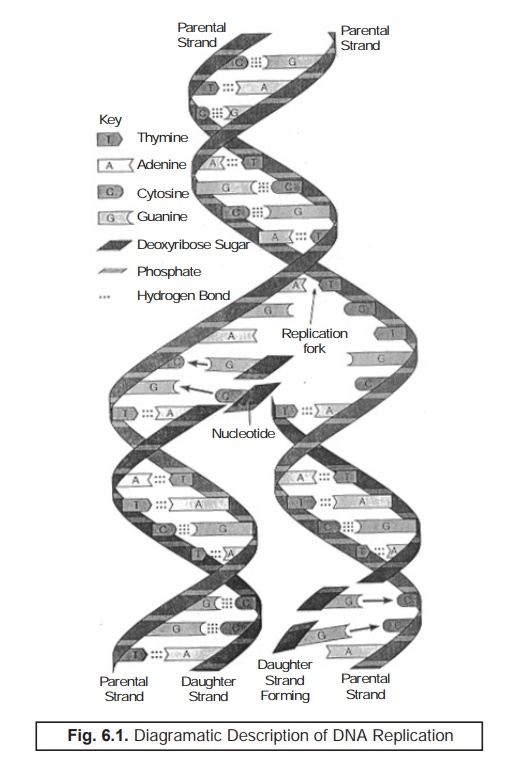DNA Replication
| Home | | Pharmaceutical Microbiology | | Pharmaceutical Microbiology |Chapter: Pharmaceutical Microbiology : Microbial Genetics and Variations
Replication refers to the duplication process of the genetic material. However, in DNA replication, it has been seen that one ‘parental’ double-stranded DNA molecule gets duly converted into two respective identical ‘daughter’ molecules.
DNA
Replication
Replication refers to the duplication process
of the genetic material. However, in DNA
replication, it has been seen that one
‘parental’ double-stranded DNA molecule gets duly converted into two respective identical ‘daughter’ molecules. The fundamental basis to
understand the DNA replication is
the ‘complementary structure’ of the
nitrogenous sequences (viz., A, T, C,
G) present in the DNA molecule. By virtue of the fact that the predominant
bases present along the two strands of double-helical DNA are complementary to
each other ; obviously, one strand would precisely act as a ‘tem-plate’** for the critical
production of the second strand.
Methodology
The DNA replication may be accomplished by adopting the following
steps in a sequential manner :
(1) First
and foremost the presence of ‘complex
cellular proteins’ are required essentially which direct a highly specific sequence of events.
(2) Once
the ‘replication phenomenon’ gains
momentum, the two inherent strands of the ‘parental
DNA’ get unwounded first, and subsequently separated from each other
in ‘one small DNA segment’ after
another.
(3) Consequently,
the ‘free nucleotides’ critically
present in the cytoplasm of the cell are duly matched right up to the exposed
bases of the single-stranded parental
DNA.
(4) Importantly,
wherever thymine (T) is
strategically located on the ‘original
strand’, only adenine (A) can
easily slot in precisely into place on the
‘new strand’ ; likewise, whenever
guanine (G) is duly located on the
‘original strand’, exclusively
cytosine (C) may aptly fit into
place, and so on so forth.
(5) In
this entire process, any such ‘bases’
(i.e., A, T, C, G which base-paired improperly are subsequently
removed and immediately replaced by the corresponding replication enzymes.
(6) Once
the ‘aligning process’ has been duly
accomplished, the newly incorporated
nucleotide gets adequately linked to the growing DNA strand by the aid of an enzyme usually termed as DNA-polymerase.
(7) As a
result, the parental DNA gets duly
unwounded a little further to safely permit the incorporation of the next range
of nucleotides. Thus, the ‘critical point’ at which the ‘replication of DNA’ actually takes
palce is widely known as the
‘Replication Fork’, as depicted in Figure
: 6.1.

Explanation of Figure 6.1. The
various cardinal points that explain the
DNA replication in Fig. 6.1. are as follows :
(1) Double
helix of the parental DNA gets separated as weak H-bonds between the
nucleotides strategically located on opposite strands usually break in response
to the action of replica-tion enzymes.
(2) H-bonds
that critically come into being between new
complementary nucleotides and each strand of the parental template to give rise to the formation of the newer base pairs.
(3) Enzymes
catalyze the formation of sugar-phosphate
bonds existing between the sequen-tial
nucleotides critically positioned on each resulting daugther strand.
It has
been duly observed that the ‘replication
fork’ mostly moves very much along the parental
DNA, whereas each of the unwound
single strands strategically combines with new nucleotides. In this way, both these strands, namely : (a)
Original strand, and (b) Daugther strand (newly synthesized),
get rewound, intimately. As we critically notice that each of the newly formed
double-stranded DNA molecule essentially comprise of one original conserved
strand and one altogether new
strand, the phenomenon of replication
under these conditions is invariably termed as semiconservative replication.
Related Topics
